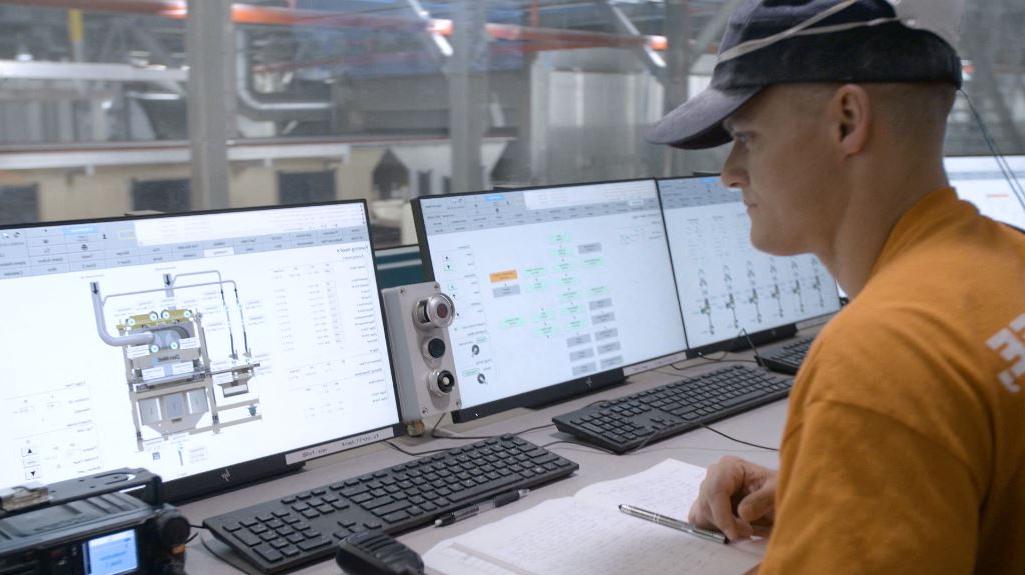
Airlaid
足彩外围网站 is the world leader in high-quality, customized nonwoven airlaid materials, with four sites spanning the United States, Canada and Germany. Our airlaid materials can be found in applications such as feminine hygiene, adult incontinence, wipes, table top, food packaging and medical care.
What is airlaid?
Airlaid is a highly absorbent fabric consisting of one or more layers. Most are composed of all-natural fluff pulp, often in combination with binding fibers and functional additives. Each layer can be designed to add specific functionality to the final homogeneous fabric.
How is airlaid made?
We manufacture airlaid material through a three-step process:
- Fiber preparation and delivery. Specialty pulp rolls are defiberized into individual fibers, and bales of fibers are opened to allow transport to the production line to form the fabric.
- Web formation. Individual fibers are deposited onto a vacuum belt to form a web.
- Web consolidation. The web is consolidated into the final fabric by either thermo-bonding (TBAL), chemical bonding (LBAL), or a combination of consolidation methods (MBAL).
This airlaid manufacturing process creates a final nonwoven fabric that is well suited for many applications and is most often used when exceptional fluid absorption is required.

Wetlaid
We bring cutting-edge technology and decades of expertise to the wetlaid nonwoven industry. At our sites in Gernsbach, Germany, Lydney, UK, and Scaër, France, we use inclined wire machines to create lightweight, highly porous engineered materials for beverage filtration, wipes, decorative laminates and electrical capacitors. We process specialty long fibers, such as abaca, from our own pulp site in the Philippines to create a best-in-class product.
In Dresden, Germany, we are the leading global supplier of nonwoven wallcover base materials. In Ober-Schmitten, Germany, we produce glassine for a variety of applications and specialty kraft solutions for electrical capacitors.
What is wetlaid?
Wetlaid is a form of fiber processing where a dilute suspension consisting mostly of separate cellulose fibers in water is drained through a sieve-like screen so that a mat of randomly interwoven fibers is laid down. Water is further removed from this sheet by pressing, sometimes aided by suction or vacuum, or heating. Once dry, a flat, uniform and strong sheet of is achieved.
How is wetlaid made?
We make wetlaid materials by suspending specialty cellulose and synthetic fiber and performance enhancing additives in a diluted slurry. The slurry is uniformly deposited onto a moving wire screen that allows water to pass through. The fibers collect on the screen forming a web that will be further processed. Once fully processed and dry, the web is rolled into large parent reels and ready for final converting and packaging.

Spunlace
Our high-performing and innovative spunlace nonwoven materials serve the growing wipes, critical cleaning, medical, beauty and hygiene categories. We have four spunlace manufacturing sites across the US, Spain and France, some of which have proprietary lines.
What is spunlace?
Spunlace is a nonwoven fabric, derived from the process of entangling a web of loose fibers through multiple rows of high-pressure water jets. Sontara® fabrics are made by a proprietary hydro-entanglement operation that uses high-pressure water to entangle key raw ingredients, producing a nonwoven fabric that feeds medical, beauty, and industrial wiper end-use applications.
How is spunlace made?
Spunlace products are made using high-pressure water jets to hydraulically entangle various fibers to form a strong, absorbent web. Unlike many nonwoven fabrics, spunlace is free from binders, chemicals and adhesives. Our spunlace materials are made from specialty pulp, natural, plant-based and synthetic fibers.

Metallized
The metallization technology is used in wet glue labels for returnable bottles, self-adhesive labels for the wine and spirit industry and packaging such as gift wrap. (See our metallized label and metallized packaging solutions.)
What are metallized materials?
Metallized materials are highly engineered composites made of an ultra-thin layer of aluminum and lacquers on special cellulose-based substrates. They come in a variety of qualities and weights. Metallized materials have an exceptionally low metal content, on average the aluminium content is less than 0.002% of the weight. As a result, they may be recycled with other similar materials.
How are metallized materials made?
The metallization process has three steps:
- Pre-lacquering. We pre-lacquer our one-side coated substrates. This increases the smoothness of the base material and ensures a high gloss.
- Aluminum deposition. We vacuum-coat the material with a thin layer of aluminum. During this process, aluminum is deposited onto the coated substrate surface at high temperatures.
- Top coat. We apply a top coating to the aluminum layer. This ensures good printability and scratch resistance. The material can also be embossed upon customer request.

Solutions for Everyday Life
Consumers rely on 足彩外围网站 for everything from their morning coffee to personal care products. Browse our engineered materials across a variety of applications.
Contact Us
足彩外围网站 Global Headquarters
Suite 600
Charlotte, NC 28209 U.S.A.
+1-866-744-7380
+1-717-850-0170
